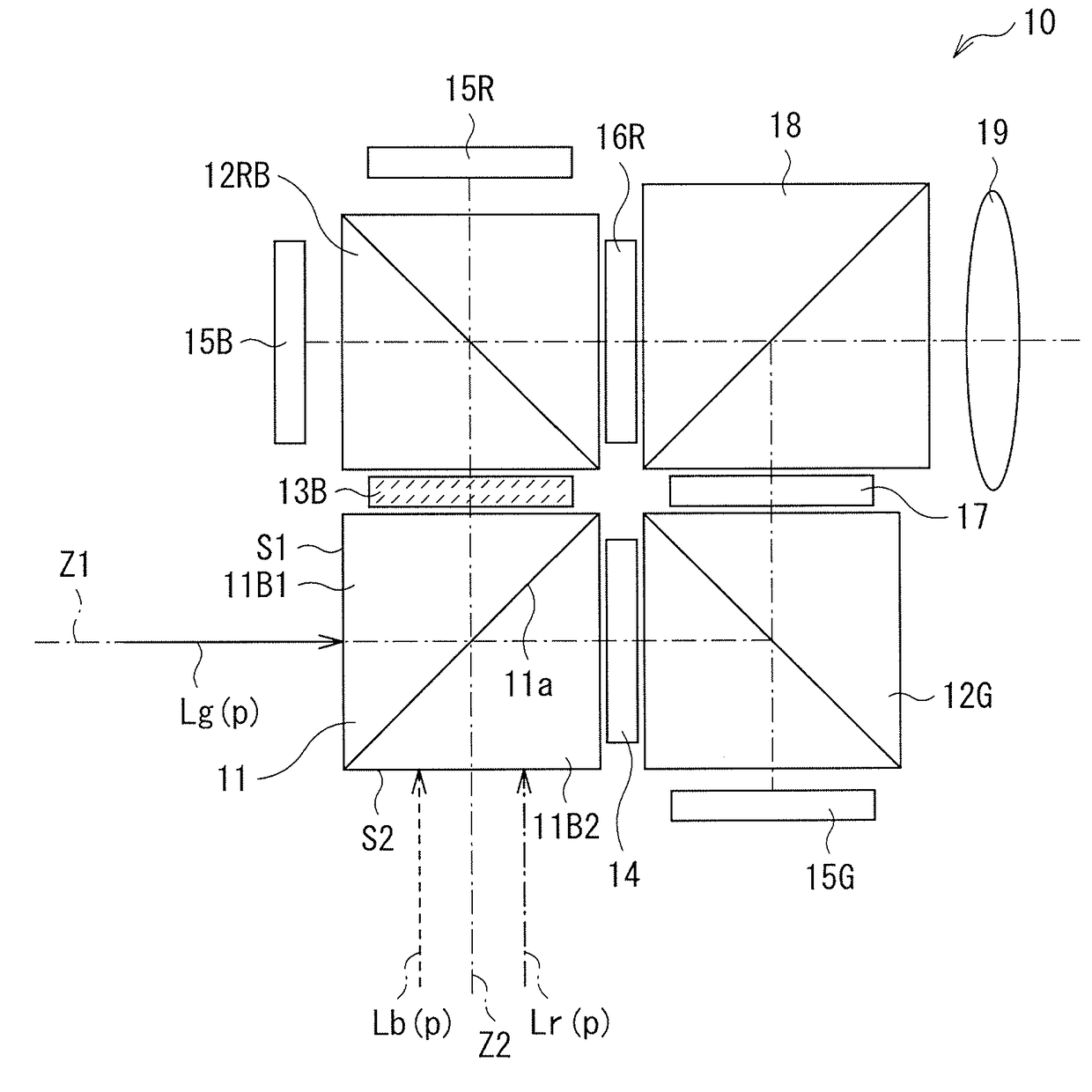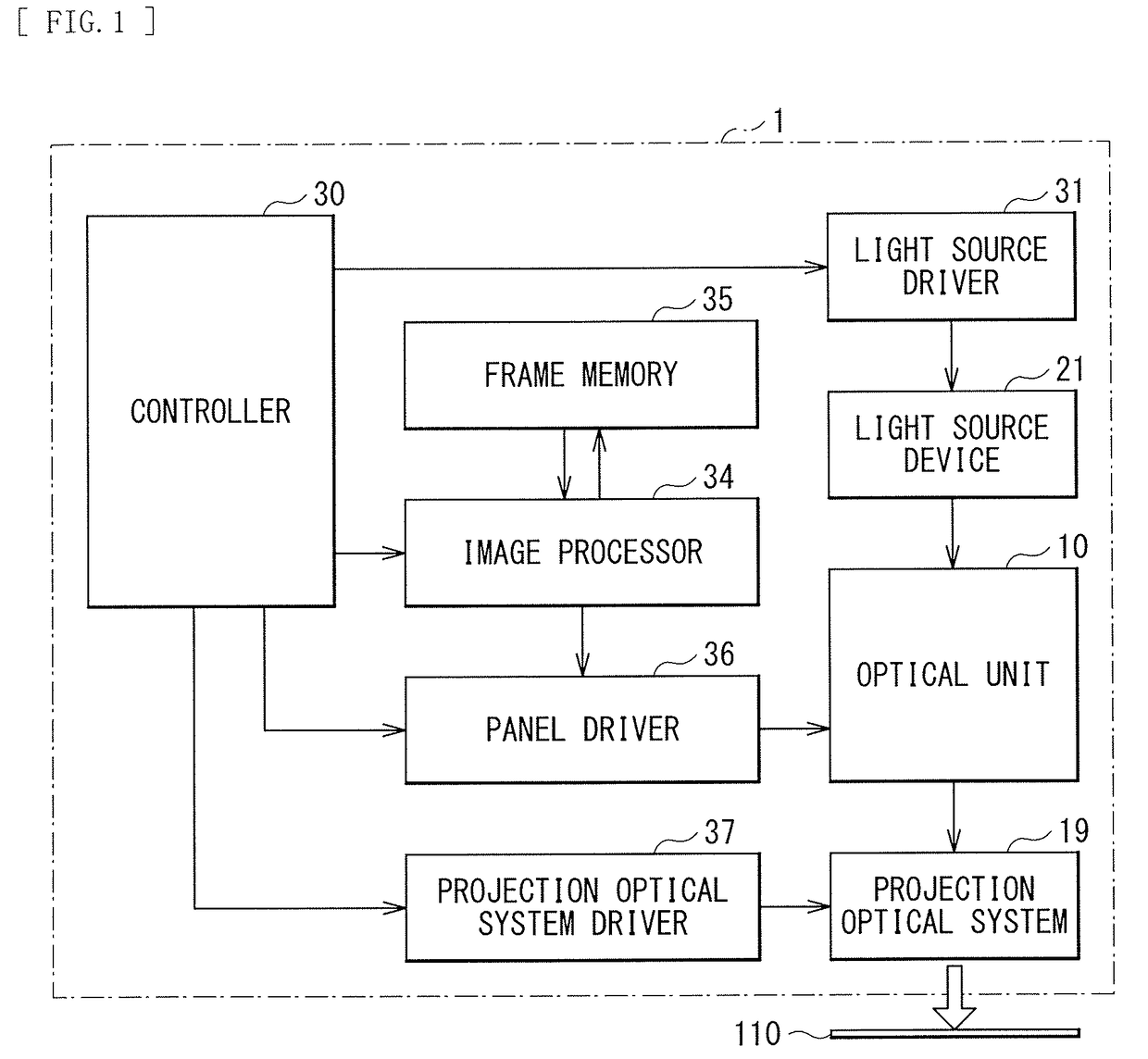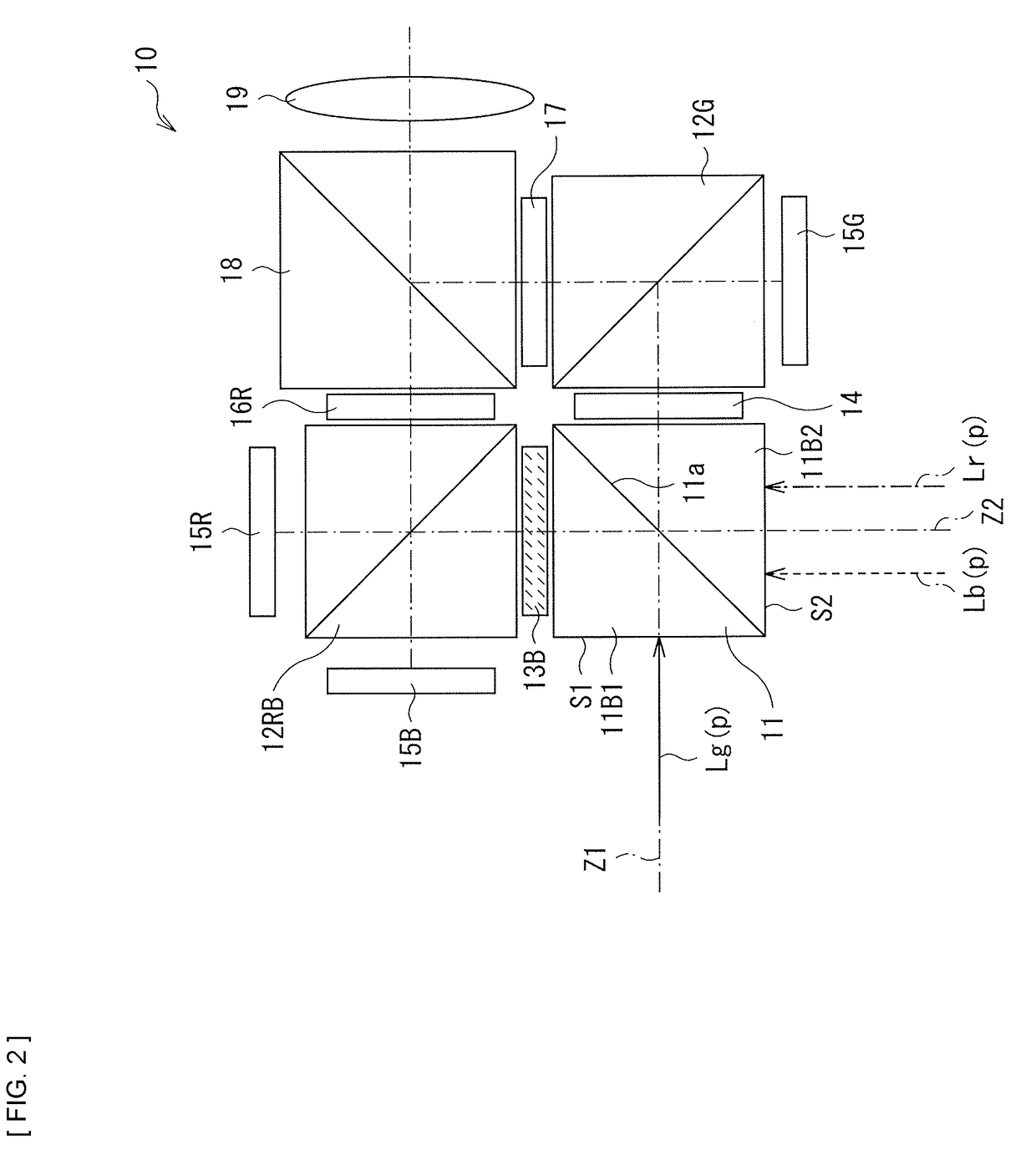Projection display apparatus
a projection display and display device technology, applied in the direction of picture reproducers using projection devices, instruments, non-linear optics, etc., can solve the problem of reducing the contrast ratio of projected images
- Summary
- Abstract
- Description
- Claims
- Application Information
AI Technical Summary
Benefits of technology
Problems solved by technology
Method used
Image
Examples
first embodiment
Configuration
[0045]FIG. 1 is a functional block diagram illustrating an entire configuration of a projection display apparatus (a projection display apparatus 1) according to a first embodiment of the present disclosure. The projection display apparatus 1 is, for example, a display apparatus that projects an image on a screen 110 (a projection surface). The projection display apparatus 1 is coupled to an unillustrated external image supplier via an I / F (interface), and performs projection on the screen 110 on the basis of an image signal inputted to the interface. Examples of the external image supplier include computers such as PCs and various kinds of image players. It is to be noted that a configuration of the projection display apparatus 1 described below is illustrative, and the projection display apparatus of the present disclosure is not limited to such a configuration.
[0046]The projection display apparatus 1 includes, for example, a light source driver 31, a light source dev...
modification example 1-1
[0088]FIG. 10 illustrates a configuration example of an optical unit according to a modification example 1-1. The foregoing embodiment involves an example in which light in the respective wavelength bands enters the incident surfaces S1 and S2 of the polarization splitter 11 as p-polarized light; however, light entering the polarization splitter 11 may be s-polarized light. For example, as with the configuration of the modification example, light Lg(s) in the green band may enter the incident surface S1 of the polarization splitter 11 and light Lr(s) in the red band and light Lb(s) in the blue band may enter the incident surface S2 of the polarization splitter 11.
[0089]In the modification example, each of the light Lr(s) in the red band, the light Lg(s) in the green band, and the light Lb(s) in the blue band is emitted as s-polarized light from the light source. Moreover, a retardation film (corresponding to the retardation film 14 in the foregoing embodiment) is unnecessary between...
modification example 1-2
[0092]FIG. 11 illustrates a configuration example of an optical unit according to a modification example 1-2. In the foregoing embodiment, the light in the green band enters the incident surface S1 of the polarization splitter 11, and the light in the red band and the light in the blue band enter the incident surface S2 of the polarization splitter 11; however, a combination of light in the wavelength bands entering the incident surfaces S1 and S2 is not limited thereto. For example, as with the modification example, the light in the blue band may enter the incident surface S1, and the light in the green band and the light in the red band may enter the incident surface S2.
[0093]In the modification example, each of the light Lr(p) in the red band, the light Lg(p) in the green band, and the light Lb(p) in the blue band is emitted as p-polarized light from the light source. Moreover, a wavelength selective retardation film 13R1 is disposed between the incident surface S2 of the polariz...
PUM
 Login to View More
Login to View More Abstract
Description
Claims
Application Information
 Login to View More
Login to View More - R&D
- Intellectual Property
- Life Sciences
- Materials
- Tech Scout
- Unparalleled Data Quality
- Higher Quality Content
- 60% Fewer Hallucinations
Browse by: Latest US Patents, China's latest patents, Technical Efficacy Thesaurus, Application Domain, Technology Topic, Popular Technical Reports.
© 2025 PatSnap. All rights reserved.Legal|Privacy policy|Modern Slavery Act Transparency Statement|Sitemap|About US| Contact US: help@patsnap.com



